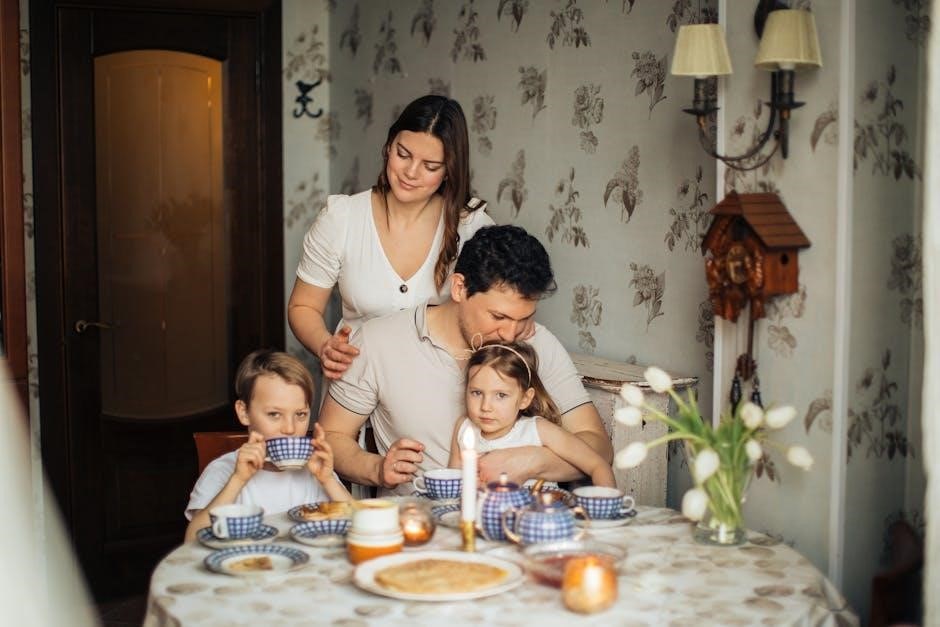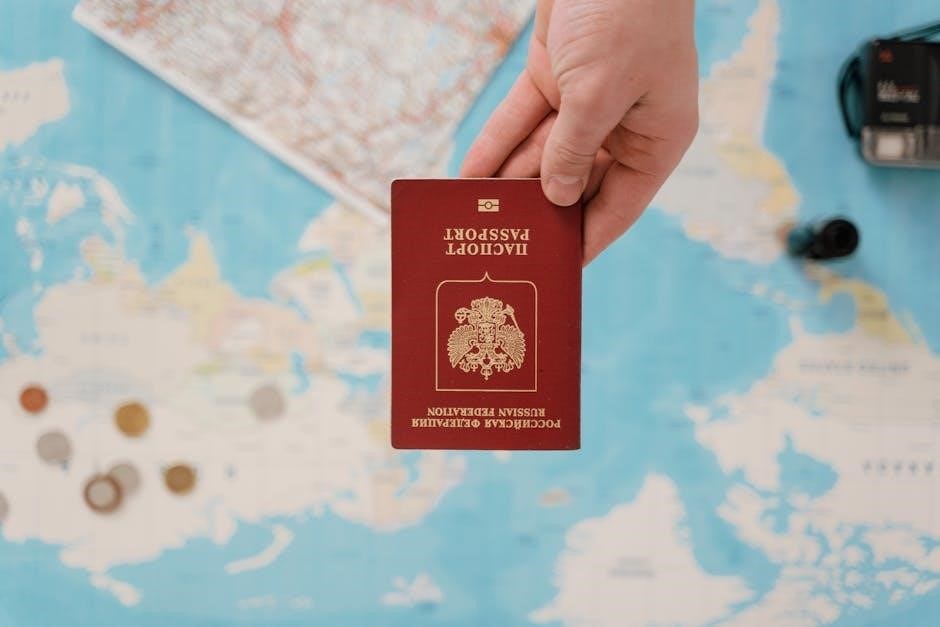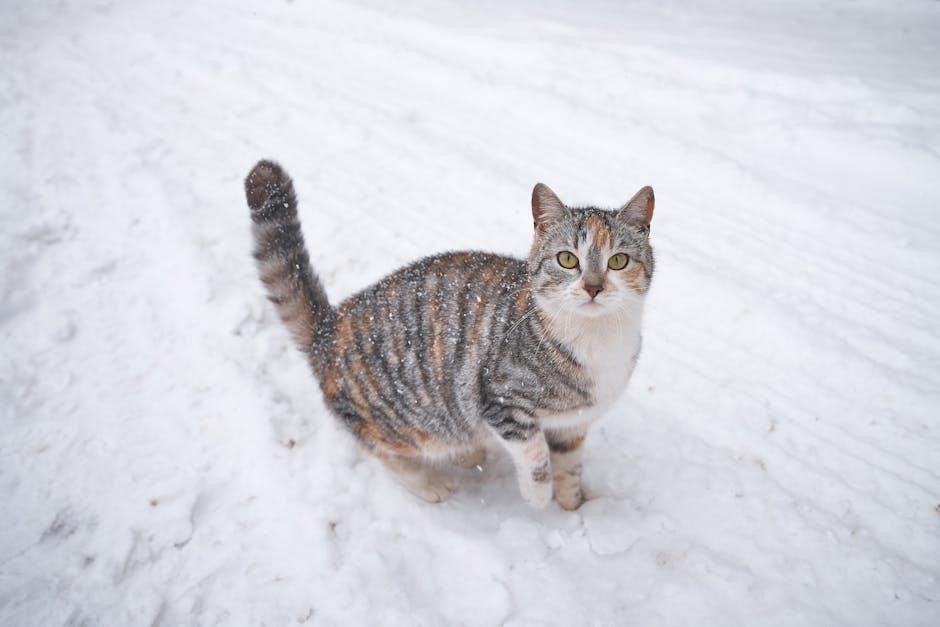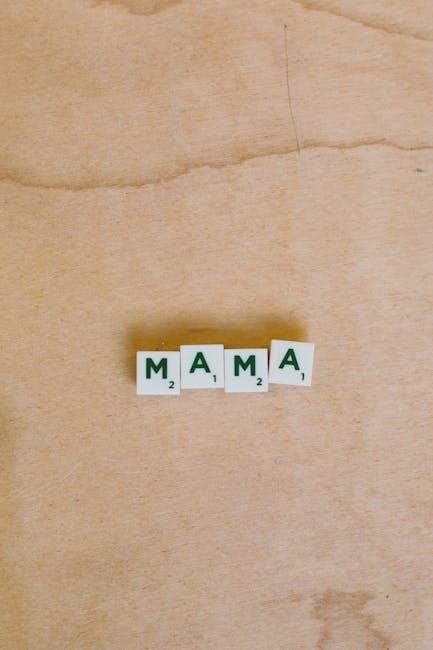russian verb conjugations workbook pdf

Welcome to this comprehensive workbook on Russian verb conjugations! Mastering verb conjugations is essential for fluency, as Russian verbs change forms based on tense, aspect, and mood․ This guide covers the two main conjugation types (-е- and -и-), irregular verbs, and practical exercises to help you grasp these concepts effectively․ With clear explanations and numerous practice drills, this workbook will make your learning journey systematic and rewarding․
1․1․ Overview of Russian Verb Conjugation
Russian verbs are divided into two main conjugation types: the -е- (first conjugation) and -и- (second conjugation) groups․ Verbs in each group share similar endings, which change based on tense, aspect, and the subject’s gender and number․ Aspect pairs, such as проводить-провести, also play a crucial role in conjugation, distinguishing between imperfective and perfective actions․ While most verbs follow these patterns, some irregular verbs deviate, requiring memorization․ This workbook provides a structured approach to mastering these conjugations through clear explanations and practical exercises․
1․2․ Importance of Mastering Verb Conjugations
Mastering Russian verb conjugations is crucial for effective communication, as verbs are the backbone of sentence structure․ Understanding conjugations helps in conveying tense, aspect, and mood accurately․ It enables learners to distinguish between actions in progress and completed actions, such as imperfective and perfective aspects․ Proficiency in conjugation enhances fluency, allowing for precise expression of ideas․ This workbook emphasizes systematic practice to overcome challenges like irregular verbs and aspect pairs, ensuring learners develop a strong foundation for advanced language use;
1․3․ Structure of a Russian Verb Conjugations Workbook
This workbook is designed to guide learners through the complexities of Russian verb conjugations systematically․ It begins with an introduction to the basics, followed by detailed sections on the two main conjugation types (-е- and -и- verbs)․ Each chapter includes clear explanations, conjugation tables, and practice exercises․ The workbook also covers aspect pairs, motion verbs, and reflexive verbs, with a focus on practical usage․ Exercises range from fill-in-the-blank drills to sentence formation, ensuring comprehensive practice․ The structured approach helps learners build confidence and mastery of Russian verb conjugations․

Types of Russian Verb Conjugations
Russian verbs are categorized into two main conjugation types: -е- (first conjugation) and -и- (second conjugation)․ These groups are defined by their endings in the present tense, with regular patterns for each type․ Understanding these classifications is crucial for mastering verb conjugation․ The workbook provides detailed tables and examples for both types, helping learners identify and practice the correct forms․ This foundational knowledge is essential for constructing grammatically correct sentences in Russian․ Regular practice with exercises ensures proficiency in using these verb types accurately․ The structured approach makes learning manageable and effective․
2․1․ First Conjugation Verbs (-е- Type)
First conjugation verbs in Russian are characterized by the -е- or -ё- in the infinitive form and specific endings in the present tense․ These verbs typically end with -ю, -у, -ешь, or -ет․ For example, verbs like говорить (to speak) and делать (to do) follow this pattern․ The -е- type is further divided into two subgroups based on whether the stress falls on the -е- or not․ Regular endings make these verbs predictable, but exceptions exist․ Mastering these patterns is crucial for forming correct sentences in Russian․ The workbook provides extensive drills to practice these conjugations․
2․2․ Second Conjugation Verbs (-и- Type)
Second conjugation verbs in Russian are identified by the -и- in the infinitive form and distinct endings in the present tense․ These verbs often end with -у, -ишь, -ит, or -ат․ Examples include фильтровать (to filter) and любить (to love)․ While most verbs in this group follow predictable patterns, some exceptions exist, such as verbs ending in -ить, which may drop the -и- in certain forms․ Regular practice with exercises in this workbook will help you master these conjugations and improve your fluency in Russian․
2․3․ Irregular Verbs in Russian
Russian irregular verbs do not follow standard conjugation patterns and must be memorized․ These verbs often undergo stem changes or use unpredictable endings․ For example, идти (to go) has unique forms like я иду, ты идёшь, and он идёт․ Another example is взять (to take), which changes its stem completely in different tenses․ This workbook provides extensive drills and exercises to help learners commit these irregular forms to memory, ensuring mastery of even the most challenging verbs in the Russian language․

Russian Verb Tenses
Russian verbs are conjugated across three main tenses: past, present, and future․ Each tense requires specific endings and stem changes, forming a structured system for clear communication in speech and writing․
3․1․ Present Tense Conjugation
The present tense in Russian is formed by conjugating verbs according to gender, person, and number․ For first conjugation verbs (e․g․, говорить), endings are -у, -ишь, -ит, -им, -ите, -ат․ Second conjugation verbs (e․g․, пить) use -ю, -ишь, -ит, -им, -ите, -ат․ Regular verbs follow predictable patterns, while irregular verbs like быть and иметь require memorization․ Stem changes are common in verbs like писать (пишу, пишешь)․ Mastering present tense is foundational, as it forms the basis for other tenses․ Practice with fill-in-the-blank exercises and sentence formation drills is essential for proficiency․
3․2․ Past Tense Conjugation
Russian past tense conjugation involves adding specific endings to the verb stem, which varies by gender and number․ Masculine nouns use -л, feminine -ла, neuter -ло, and plural -ли․ For example, говорил, говорила, говорило, говорили․ Irregular verbs like быть (был, была, было, были) and иметь (имел, имела, имело, имели) require memorization․ Aspect also plays a role, with perfective and imperfective forms differing in endings and usage․ Past tense is used for completed actions, and mastering its conjugation is vital for accurate storytelling in Russian․
3․3․ Future Tense Conjugation
Russian future tense conjugation varies between regular and irregular verbs․ Regular verbs use the auxiliary verb быть in the future tense, combined with the imperfective infinitive․ For example, я буду делать, ты будешь делать․ Irregular verbs, like идти (я пойду) and быть (я буду), have unique forms․ The future tense expresses planned or certain actions․ It is formed by combining the future form of быть with the imperfective infinitive for regular verbs, while irregular verbs follow specific conjugation patterns․ Mastering future tense is essential for discussing plans and predictions in Russian․
Aspect in Russian Verbs
Russian verbs have two aspects: imperfective (ongoing actions) and perfective (completed actions)․ Aspect determines tense and conjugation patterns, crucial for precise meaning in sentences․ Mastering aspect is vital for accurate communication in Russian․
4․1․ Imperfective vs․ Perfective Aspects
In Russian, verbs are categorized into imperfective (ongoing or repeated actions) and perfective (completed actions)․ Imperfective verbs, like читать (to read), describe actions without emphasizing completion․ Perfective verbs, like прочитать (to have read), stress the completion of an action․ The aspect determines conjugation patterns and usage in sentences․ Understanding the difference is crucial for accurate communication, as it affects tense formation and sentence meaning․ This distinction is fundamental to mastering Russian verb conjugation and is extensively covered in workbooks to help learners grasp its nuances․
4․2․ Aspect Pairs and Their Usage
Russian verbs often form aspect pairs, consisting of an imperfective and a perfective verb․ For example, ходить (to walk) and сходить (to have walked) form an aspect pair․ These pairs help express whether an action is ongoing, repeated, or completed․ Aspect pairs are essential for precise communication, as they convey different shades of meaning․ Workbooks typically include exercises to practice these pairs, ensuring learners understand how to use them correctly in context․ Mastering aspect pairs enhances fluency and accuracy in using Russian verbs effectively․
4․3․ Conjugation of Aspect Pairs (e․g․, проводить-провести)
The conjugation of aspect pairs involves understanding both imperfective and perfective forms․ For example, проводить (imperfective) and провести (perfective) differ in their endings and usage․ In present tense, проводить conjugates as пrowadу, проводишь, приводит, while the perfective провести is used for completed actions․ Past tense forms also differ, with imperfective focusing on ongoing actions and perfective on completion․ Workbooks often provide drills to practice these pairs, ensuring learners master their conjugation and correct usage in sentences․ Regular practice helps in distinguishing their use accurately․

Motion Verbs in Russian
Motion verbs like идти (to go) and ехать (to go by vehicle) are categorized into determinate and indeterminate types․ Workbooks provide conjugation drills for common pairs and their meanings․
5․1․ Types of Motion Verbs (e․g․, идти, ехать, бежать)
Russian motion verbs are categorized into determinate and indeterminate types․ Determinate verbs like идти (to go) and ехать (to go by vehicle) imply a specific direction or purpose․ Indeterminate verbs like бежать (to run) describe the action without direction․ Workbooks often list these verbs, providing conjugation drills and examples to illustrate their usage․ Understanding these types is essential for mastering sentence structure and conveying precise meanings in Russian․ Practice exercises in workbooks help learners distinguish and use these verbs correctly in context․
5․2․ Conjugation of Motion Verbs
Motion verbs in Russian, such as идти (to go), ехать (to go by vehicle), and бежать (to run), follow specific conjugation patterns․ Regular verbs like ехать and бежать use standard endings, while irregular verbs like идти require memorization․ Workbooks often provide tables and drills to practice conjugating these verbs in the present, past, and future tenses․ Understanding their conjugation is crucial for constructing correct sentences․ Practice exercises in workbooks help learners master these verbs’ unique patterns and usage in different contexts․
5․3․ Figurative Meanings of Motion Verbs
Motion verbs in Russian often carry figurative meanings beyond literal movement․ For example, идти (to go) can mean “to proceed” or “to follow a path,” while бежать (to run) can signify “to escape” or “to flee․” Verbs like ехать (to ride) and летать (to fly) can metaphorically describe moving through time or emotions․ Workbooks often include exercises to practice these figurative uses, helping learners understand how motion verbs convey abstract concepts in Russian․ Mastering these meanings enhances fluency and expression in everyday communication․

Reflexive Verbs in Russian
Reflexive verbs in Russian end with -ся or -сь and are used to denote actions where the subject acts upon themselves, crucial for expressing self-directed actions accurately․
6․1․ Formation of Reflexive Verbs (-ся/-сь)
In Russian, reflexive verbs are formed by adding the suffix -ся or -сь to the base verb․ These suffixes indicate that the action is directed toward the subject themselves․ For example, мыть (to wash) becomes мыться (to wash oneself)․ The choice between -ся and -сь depends on the verb’s base and stress patterns․ Reflexive verbs are invariant, meaning the suffix remains unchanged regardless of gender, number, or tense․ This unique formation helps express self-directed actions clearly and accurately in Russian․ Mastering reflexive verbs is essential for fluency․
6․2․ Conjugation of Reflexive Verbs
Reflexive verbs in Russian are conjugated by adding -ся or -сь to the base verb, indicating actions directed toward oneself․ In the present tense, they follow regular endings:
- Я моюсь
- Ты моешься
- Он моется
- Мы моемся
- Вы моетесь
- Они моются
In the past tense, singular forms vary by gender:
- Я мылся/мылась
- Ты мылся/мылась
- Он мылся
- Она мылась
- Оно было
Plural past tense endings are uniform:
- Мылись
- Вылись
- Они были
For the future tense, use “буду” + infinitive:
- Я буду мыться
- Ты будешь мыться
- Он будет мыться
- Мы будем мыться
- Вы будете мыться
- Они будут мыться
Some verbs have irregular conjugations or stem changes․ Practice exercises, like fill-in-the-blank and sentence formation, can help master these patterns․ Understanding verb aspect is also crucial for correct usage․
6․3․ Common Reflexive Verbs and Their Meanings
Reflexive verbs are essential for describing personal actions․ Common verbs include:
- Мываться ‒ to wash oneself
- Одеваться ⎼ to get dressed
- Приводить себя в порядок ⎼ to freshen up
- Смотреть на себя ‒ to look at oneself
- Краснеть ‒ to blush
- Нервничать ‒ to get nervous
These verbs often express self-directed actions or emotions․ For example, Я одеваюсь means “I am getting dressed․” Practice these verbs in context to understand their usage in sentences․ Mastering reflexive verbs enhances your ability to express personal experiences in Russian․
Verb Conjugation by Gender and Number
Russian verbs agree with the subject’s gender (masculine, feminine, neuter) and number (singular, plural)․ For example, говорил (he spoke) vs․ говорили (they spoke)․ Gender affects past tense conjugation, while number impacts all tenses․ Mastering these agreements is crucial for accurate sentence formation․
7․1․ Masculine, Feminine, and Neuter Forms
Russian verbs agree with the subject’s gender in the past tense․ Masculine verbs typically end in -л (e․g․, говорил ⎼ he spoke), feminine in -ла (e․g․, говорила ‒ she spoke), and neuter in -ло (e․g․, говорило ⎼ it spoke)․ This gender agreement is essential for correct sentence formation․ Practice exercises in workbooks often focus on matching verbs to their respective genders, helping learners master these endings and improve accuracy in writing and speaking․
7․2․ Singular and Plural Conjugations
Russian verbs change their endings to agree with the subject’s number․ In the present tense, singular and plural forms are distinct․ For example, он идёт (he goes) vs․ они идут (they go)․ Regular verbs follow predictable patterns, while irregular verbs may have unique endings․ Practice exercises often focus on conjugating verbs in both singular and plural forms, ensuring learners can apply the correct endings for different subjects․ This helps build accuracy in sentence construction and communication․
7․3․ Special Cases in Conjugation
Russian verb conjugation includes special cases that don’t fit standard patterns․ These often involve irregularities in stem formation or endings․ For example, verbs like быть (to be) and являться (to be, seem) have unique conjugations․ Some verbs require spelling adjustments, such as adding -е- or -и- to maintain pronunciation․ These exceptions must be memorized, as they don’t follow regular rules․ Practice exercises in workbooks often highlight these cases to help learners master them effectively and avoid common mistakes in sentence formation․

English and Russian Verb Tense Correspondence
Understanding the correspondence between English and Russian verb tenses aids learners in mastering grammar․ Present, past, and future tenses align closely, while aspect differences require careful attention․
8․1․ Present Tense Equivalents
The present tense in Russian corresponds to the English simple present, describing habitual actions or general truths․ For example, “I read” translates to “Я читаю,” and “She writes” to “Она пишет․” Russian verbs conjugate based on gender and number, with endings changing to reflect the subject․ Aspect also plays a role, as imperfective verbs (e․g․, читать) describe ongoing actions, while perfective verbs (e․g․, прочитать) emphasize completion․ Mastering present tense conjugation is foundational for constructing clear and accurate sentences in Russian․
8․2․ Past Tense Equivalents
Russian past tense verbs correspond to English simple past and past continuous․ They are formed by adding endings to the verb stem, with variations for gender and number․ For example, “I read” becomes “Я читал” (masculine), “Я читала” (feminine), or “Я читало” (neuter)․ Plural forms use “-ли” or “-ли” endings, such as “Мы читали․” Aspect influences meaning: imperfective verbs (e․g․, читать) describe ongoing actions, while perfective verbs (e․g․, прочитать) emphasize completion․ Accurate past tense conjugation is crucial for conveying specific actions in Russian narratives․
8․3․ Future Tense Equivalents
Russian future tense verbs correspond to English simple future and future continuous․ Regular verbs use “shall” or “will” equivalents, with imperfective verbs adding “-ю” or “-ем” (e․g․, “Я буду читать”)․ Perfective verbs use prefixes and drop the “-ю” ending (e․g․, “Я прочитаю”)․ Some verbs, like “идти” (to go), change completely in the future tense (e․g․, “Я пойду”)․ Aspect determines meaning: imperfective verbs describe ongoing actions, while perfective verbs emphasize completion․ Mastering future tense conjugation requires understanding aspect and irregular forms, making practice essential for accuracy․

Common Challenges in Russian Verb Conjugation
Mastery of Russian verb conjugation presents several challenges, including irregularities, aspect distinctions, and gender/number agreements․ Irregular verbs often defy standard conjugation patterns, requiring memorization․ Aspect differentiation complicates tense formation, as imperfective and perfective verbs necessitate distinct conjugation approaches․ Additionally, agreement with gender and number adds layers of complexity, especially in past tense․ These challenges highlight the need for dedicated practice and thorough understanding of grammatical principles to achieve proficiency in Russian verb conjugation․
9․1․ Irregularities in Verb Forms
Russian verb conjugation is fraught with irregularities that complicate the learning process․ Many common verbs, such as идти (to go) and брать (to take), exhibit unique stem changes and endings that defy standard conjugation patterns․ These irregularities often appear in frequently used verbs, making them unavoidable․ Learners must memorize these forms, as they do not follow predictable rules․ Irregular verbs require dedicated practice, often through repetition and drills, to ensure proper usage in different tenses and aspects․ This challenge underscores the importance of systematic study and exposure to real-life examples․
9․2․ Exceptions in Conjugation Patterns
Russian verb conjugation often presents exceptions that deviate from standard patterns․ Verbs like делать (to do) and видеть (to see) exhibit unpredictable stem changes and endings․ These exceptions apply to verbs ending in -ить or -еть, which often require unique conjugation rules․ Such irregularities can vary across tenses and aspects, complicating the learning process․ Mastering these exceptions demands careful study and practice, as they frequently appear in high-frequency verbs․ Targeted drills and exercises focusing on these exceptions are essential for achieving accuracy in conjugation․
9․3․ Tips for Mastering Verb Conjugation
Mastery of Russian verb conjugation requires consistent practice and strategic approaches․ Start by understanding basic conjugation patterns before tackling irregularities․ Group verbs by type and focus on high-frequency verbs first․ Regularly review conjugation tables and practice forming sentences․ Use flashcards to memorize endings and stems․ Engage in speaking exercises to apply verbs in context․ Seek feedback from native speakers to refine pronunciation and usage․ Lastly, utilize online tools and workbooks for structured drills and quizzes to reinforce learning․

Workbook Exercises for Practice
Engage with targeted exercises to reinforce Russian verb conjugation skills․ Practice includes fill-in-the-blanks, sentence formation drills, and mixed-tense worksheets to apply conjugation rules effectively in real-life contexts․
10․1․ Fill-in-the-Blank Exercises
Fill-in-the-blank exercises are a core component of effective verb conjugation practice․ These exercises provide sentences with missing verbs, requiring learners to conjugate the correct form based on context and grammatical rules․
They focus on various tenses, aspects, and verb types, ensuring comprehensive understanding․ Regular practice helps build accuracy and speed in applying conjugation patterns․
Exercises often include both regular and irregular verbs, covering first and second conjugations․ Answer keys are provided for self-correction, making these drills ideal for independent study and mastery;
10․2․ Sentence Formation Drills
Sentence formation drills are designed to help learners practice verb conjugation in meaningful contexts․ These exercises typically provide verb roots or infinitives and ask users to create grammatically correct sentences․
Drills often include prompts or scenarios, encouraging learners to apply verbs in real-life situations․ This method reinforces conjugation rules and enhances retention by focusing on practical usage․
Exercises cover various tenses, aspects, and verb types, including irregular verbs․ Answer keys are included for feedback, making these drills ideal for self-study and improving communication skills․

10․3․ Mixed Tense Practice Worksheets
Mixed tense practice worksheets combine verbs from different tenses, aspects, and conjugation types to test comprehensive understanding․ These exercises include sentences with blanks, requiring users to conjugate verbs correctly based on context․
Worksheets cover present, past, and future tenses, as well as imperfective and perfective aspects․ They often include irregular verbs and reflexive verbs, ensuring a well-rounded practice․
Answer keys are provided for self-checking, making these worksheets ideal for reinforcing learning and improving accuracy in verb usage across various tenses and contexts․

Resources for Learning Russian Verb Conjugation
- PDF workbooks provide comprehensive verb conjugation exercises and explanations․
- Online tools offer interactive drills and verb conjugation charts․
- Grammar guides and courses include detailed rules and practice materials․
11․1․ Recommended PDF Workbooks
Several high-quality PDF workbooks are available for mastering Russian verb conjugations․ Titles like Russian Verb Conjugation Guide and Mastering Russian Verbs offer comprehensive exercises and clear explanations․ These workbooks often include practice drills, conjugation tables, and examples for both regular and irregular verbs․ Many PDFs are designed for self-study, catering to beginners and advanced learners alike․ Some popular options are available for free download, while others can be purchased on platforms like Amazon or educational websites․ These resources provide structured learning opportunities to improve verb usage effectively․
11․2․ Online Tools for Verb Conjugation Practice
Online tools offer interactive ways to practice Russian verb conjugations․ Websites like RussianPod101 and Conjuguemos provide conjugation drills and exercises tailored to different skill levels․ Additionally, platforms such as Verbix allow users to input verbs and see their full conjugations in various tenses․ Apps like Memrise and Duolingo also include verb practice sections․ These tools are ideal for self-study, offering quizzes, flashcards, and real-time feedback․ They cover both regular and irregular verbs, making them versatile resources for mastering Russian verb conjugations effectively․
11․3․ Grammar Guides and Language Courses
Grammar guides and language courses provide comprehensive resources for mastering Russian verb conjugations․ Books like A New Russian Grammar in Use and The Oxford Russian Grammar offer detailed explanations and exercises․ Online courses on platforms like Coursera and edX include structured lessons on verb conjugation․ Additionally, websites like RussianPod101 and YouTube channels dedicated to Russian grammar provide video tutorials and interactive lessons․ These resources complement workbooks by offering practical examples and step-by-step guidance, helping learners build a strong foundation in Russian verb conjugation․
Mastering Russian verb conjugations is a significant achievement․ This workbook offers a comprehensive guide to conjugations, aspects, and irregularities, ensuring fluency and confidence through consistent practice․
12․1․ Summary of Key Concepts
This workbook covers essential Russian verb conjugations, focusing on regular and irregular verbs, aspects, and tenses․ It explores first and second conjugation patterns, imperfective and perfective aspects, and reflexive verbs․ Motion verbs and their unique conjugations are also addressed, along with tips for mastering challenging forms․ Practical exercises and examples provide hands-on practice, ensuring a deep understanding of verb usage in context․ The workbook emphasizes consistent practice and review to build fluency and confidence in using Russian verbs accurately․
12․2․ Final Tips for Effective Learning
To master Russian verb conjugations, set realistic goals and practice consistently․ Focus on common verbs first, as they appear frequently in speech․ Use flashcards to memorize irregular forms and aspect pairs․ Practice forming sentences to apply conjugations in context․ Immerse yourself in Russian media to hear verbs in use․ Track your progress and review mistakes regularly․ Stay motivated by celebrating small achievements and remind yourself of the importance of verb mastery for fluency․ With dedication and the right strategies, you’ll overcome challenges and excel in Russian verb conjugation․
12․3․ Encouragement for Continued Practice
Learning Russian verb conjugations is a journey that requires patience and persistence․ Celebrate small victories, like mastering a new tense or irregular verb․ Every practice session brings you closer to fluency․ Remember, consistent effort leads to confidence and proficiency․ Don’t be discouraged by challenges—each one is an opportunity to grow․ The reward of mastering such a complex language is immense․ Stay motivated, embrace the process, and keep pushing forward․ Your dedication will pay off, and you’ll enjoy the satisfaction of speaking Russian with precision and clarity․